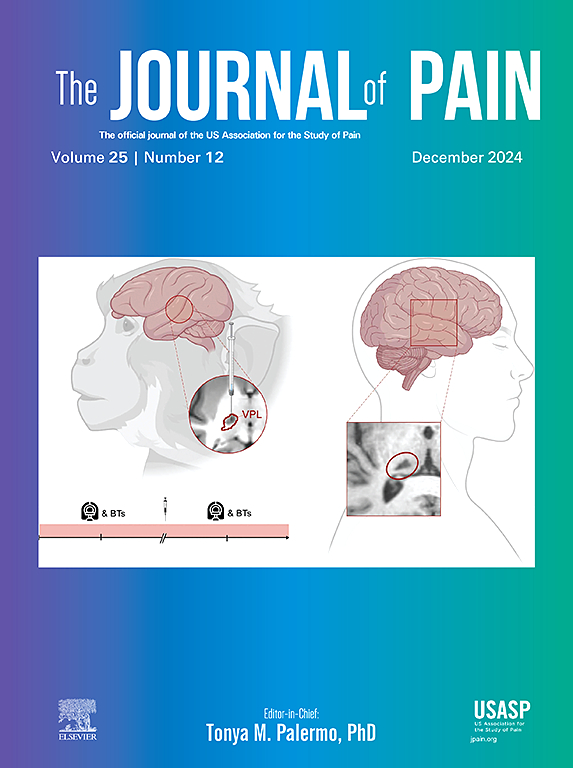Spinal pituitary adenylate cyclase-activating polypeptide and PAC1 receptor signaling system is involved in the oxaliplatin-induced acute cold allodynia in mice
IF 4
2区 医学
Q1 CLINICAL NEUROLOGY
引用次数: 0
Abstract
Chemotherapy-induced peripheral neuropathy (CIPN) is a type of peripheral neuropathy that develops in patients treated with certain anticancer drugs. Oxaliplatin (OXA) causes CIPN in approximately 80–90 % of patients; thus, it is necessary to elucidate its underlying mechanism and develop effective treatments and prevention methods. The purpose of this study was to determine whether the pituitary adenylate cyclase-activating polypeptide (PACAP)/PAC1 receptor system in the spinal dorsal horn is involved in OXA-induced acute cold allodynia and examine the effect of a PAC1 receptor antagonist. Administration of OXA induced acute cold allodynia in wild-type mice, but not in PACAP-/- mice. In the dorsal root ganglia, OXA upregulated PACAP expression, particularly in small-sized neurons. OXA-induced cold allodynia was ameliorated by intrathecal (i.t.) injection of PACAP6–38 (peptide antagonist for PACAP receptor) and PA-8 (small-molecule antagonist specific for PAC1 receptor). I.t. PACAP, but not vasoactive intestinal polypeptide, resulted in cold allodynia, which was blocked by PA-8. OXA induced the activation of spinal astrocytes in a PAC1 receptor-dependent manner. The results suggest that spinal PACAP/PAC1 receptor systems are involved in OXA-induced acute cold allodynia through astrocyte activation. Furthermore, we demonstrated that the systemic administration of PA-8 resulted in therapeutic and preventative effects on OXA-induced acute cold allodynia. Because PA-8 did not affect the anticancer effects of OXA, we propose PAC1 receptor inhibition as a new strategy for the treatment and prevention of CIPN.
Perspective
Cold allodynia is a hallmark of OXA-induced peripheral neuropathy. This study demonstrated the involvement of spinal PACAP/PAC1 receptors in OXA-induced acute cold allodynia. We propose PAC1 receptor inhibition as a new strategy for the treatment and prevention of OXA-induced acute cold allodynia.
脊髓垂体腺苷酸环化酶激活多肽和PAC1受体信号系统参与奥沙利铂诱导小鼠急性冷性异位性痛
化疗诱导的周围神经病变(CIPN)是在接受某些抗癌药物治疗的患者中发生的一种周围神经病变。奥沙利铂(OXA)导致大约80 - 90%的患者发生CIPN;因此,有必要阐明其潜在机制,开发有效的治疗和预防方法。本研究的目的是确定脊髓背角垂体腺苷酸环化酶激活多肽(PACAP)/PAC1受体系统是否参与oxa诱导的急性冷异常性痛,并检测PAC1受体拮抗剂的作用。OXA在野生型小鼠中引起急性冷异常性痛,而在PACAP-/-小鼠中没有引起。在背根神经节中,OXA上调PACAP的表达,尤其是在小尺寸神经元中。通过鞘内注射PACAP6-38 (PACAP受体肽拮抗剂)和PA-8 (PAC1受体特异性小分子拮抗剂),oxa诱导的冷性异位性痛得到改善。i . PACAP,而非血管活性肠多肽,导致冷性异常性痛,被PA-8阻断。OXA以PAC1受体依赖的方式诱导脊髓星形胶质细胞的激活。结果表明,脊髓PACAP/PAC1受体系统通过星形胶质细胞激活参与oxa诱导的急性冷异常性痛。此外,我们证明了PA-8的全身给药对oxa诱导的急性感冒异常性痛具有治疗和预防作用。由于PA-8不影响OXA的抗癌作用,我们提出抑制PAC1受体作为治疗和预防CIPN的新策略。冷异常性痛是oxa诱导的周围神经病变的标志。本研究证实脊髓PACAP/PAC1受体参与oxa诱导的急性冷性异常性痛。我们建议抑制PAC1受体作为治疗和预防oxa诱导的急性感冒异常性痛的新策略。
本文章由计算机程序翻译,如有差异,请以英文原文为准。
求助全文
约1分钟内获得全文
求助全文
来源期刊

Journal of Pain
医学-临床神经学
CiteScore
6.30
自引率
7.50%
发文量
441
审稿时长
42 days
期刊介绍:
The Journal of Pain publishes original articles related to all aspects of pain, including clinical and basic research, patient care, education, and health policy. Articles selected for publication in the Journal are most commonly reports of original clinical research or reports of original basic research. In addition, invited critical reviews, including meta analyses of drugs for pain management, invited commentaries on reviews, and exceptional case studies are published in the Journal. The mission of the Journal is to improve the care of patients in pain by providing a forum for clinical researchers, basic scientists, clinicians, and other health professionals to publish original research.
 求助内容:
求助内容: 应助结果提醒方式:
应助结果提醒方式:


